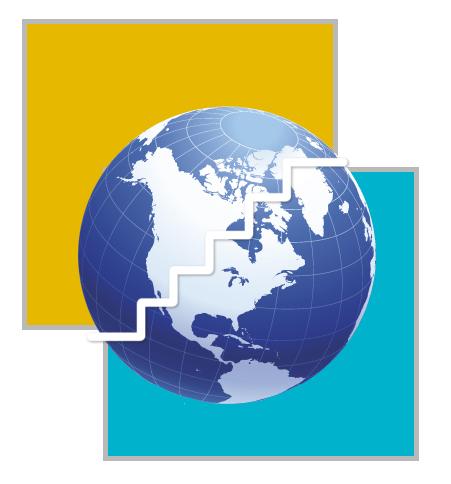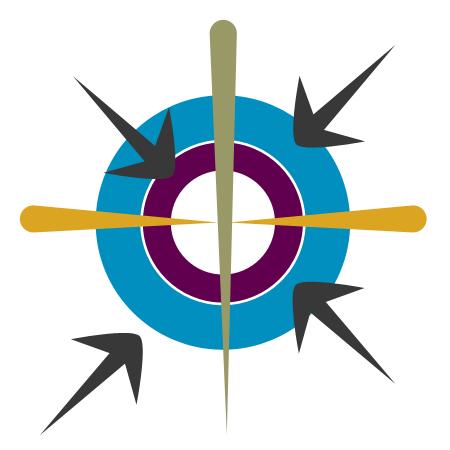MEDIA
Factors in restructuring India-Pakistan relations
Since January 2004, India and Pakistan have initiated a cautious peace process. The year 2004 witnessed substantial improvement in the contact between the two societies, including unprecedented visits of media persons to Jammu & Kashmir on both sides of the Line of Control. Also, unusual was the experience of bilateral cricket matches where the spectators of both the countries cheered both teams. There is already an agreement on a tentative schedule of official meetings until September 2005.
However, it is important to note that despite the peace process, the arms race has increased at a hectic pace. In the last 15-16 months, India and Pakistan have conducted 20 missile tests. Pakistani military leadership has been shopping for arms all around the world including new sources such as Sweden.
Moreover, there are indications that a meeting of Corps Commanders held on January 6, 2005, has authorised ISI to work out a strategy with extremist groups to launch a fresh series of attacks on a limited basis, in the Indian territory from March 2005.
 The two countries are committed to reach a final settlement as per the Simla Agreement of 1972. At Simla, the final settlement was envisaged in the narrow context of the cartography of Jammu & Kashmir. The developments of the last 30 years compel the final settlement to be comprehensive if it really has to be final and enduring.
The two countries are committed to reach a final settlement as per the Simla Agreement of 1972. At Simla, the final settlement was envisaged in the narrow context of the cartography of Jammu & Kashmir. The developments of the last 30 years compel the final settlement to be comprehensive if it really has to be final and enduring.
The crafting of the final settlement requires honest, though bitter analysis of the psychology and ground realities of the two countries. The conflict between India and Pakistan currently extends to the entire South Asian region, from Afghanistan to Bangladesh. It also engages sections of population in far-flung parts of the two countries. It is reflected in the strife in India�€™s north-east and Pakistan�€™s Balochistan.
India accuses Pakistan of using Bangladesh as a platform to destabilise India�€™s eastern sector. Pakistan accuses India of using Afghanistan as a platform to subvert Pakistan�€™s western half.
In this widespread conflict, the Jammu & Kashmir component is known internationally. The Jammu & Kashmir issue itself has several dimensions. To India, it is a test of secularism. To Pakistan, it is a source of strategically important rivers. To the people of Jammu & Kashmir, it is a matter of living in peace with dignity.
The search for a final settlement therefore must be predicated on the analysis of the three essential elements in the bilateral relationship - fire, water and earth. The final settlement must also be a basis for restructuring relations between the two countries, since a settlement will not be final unless it paves the way for a new and healthy relationship between the two countries in the place of current hostility.
The primary requirement of the final settlement is to accept the entirety of the India-Pakistan rivalry and to deal with it. At the deepest level, this confrontation can be traced to the identity crisis. India traces its origin to a civilization of 4,000-5,000 years ago. Pakistan traces its nationhood either to the Lahore Resolution of 1940, or to the conquest of Sindh by Mohammad bin Qasim in 712 AD. If the Lahore Resolution is the basis of Pakistan�€™s identity, the State of Pakistan is a protest against Indian dominance of the region. If Mohammad bin Qasim�€™s conquest is the basis, the State of Pakistan is a representation of foreign conquest.
The final settlement requires first and foremost, that Pakistan perceives itself not in terms of protest or conquest, but simply as a normal and progressive state. The people of Pakistan deserve that their leaders treat their state as Pakistan, and not as �€œnon-India�€.
The final settlement also needs recognition of the factual reality that there is no psychological divide on the basis of religion in the South Asian region, though there are cultural differences. More than two thirds of the Muslims in the subcontinent have chosen to live on the basis of theological identity. Even among them, it is still uncertain if some will choose ethnolinguistic nationalism.
While India has a clear identity as a nation, it is striving to define its role in the world. While India aspires to play a global role, it often thinks and behaves as a power seeking regional dominance. The final settlement will require a mind-set change, whereby India defines a global role for itself in a way that carries Pakistan and other neighbours with it, as partners in progress, the way the United States is able to carry Canada, or France and Germany are able to carry Benelux. In other words, both India and Pakistan will need to redefine their identity on a much higher plane than their current obsessions indicate.
The final settlement must be about rising above our identities to redefine the image of �€œus�€.
The redefinition of Indian and Pakistani identity calls for the curbing of extremism. It is necessary to do so for internal restructuring of the two nations, which is essential for the restructuring of relations between them into a positive and peaceful mould. It is a tough call for Pakistan, which has been using terrorist groups as tools of state policy. Pakistan has shown its ability to reverse this policy to serve American interests. It needs to extend its commitment to deconstructing terror by ending the use of terror as a state policy in toto.
Once it is determined to travel on this path, it will have to take tough action against a large number of terrorist organisations involved in violence and unlawful activities. Many of them aspire to Islamise Pakistan, dismantle India, capture assets of the two states and then conquer the world. Except for a few groups, which are focused on Kashmir, the others have much wider objectives extending to the entire subcontinent and eventually the world. They will not be satisfied with the resolution of the Jammu & Kashmir issue.
The only way to curb their activities would be for the Pakistani government to arrest top leaders of all such organisations, and freeze their assets, ensuring that these measures apply to any new organisations with which any individuals associated with earlier banned organisations, might be associated.
Pakistan also needs to ban schools associated with Jama�€™at-ud-Dawa, ensure that the madrassa education system is not misused by vested interests to recruit students for training in violence, and to protect government and private schools from encroachment by militant organisations for recruitment and indoctrination. The final settlement will depend on Pakistan ensuring that it destroys all groups that aspire for the destruction of Pakistan itself in its present form, and also India.
There is a growing Jhang-Peshawar Consensus among sections of the army, political parties and jihadi groups to convert Pakistan into a hard-line Sunni Muslim state, annihilating Shia professionals and maintaining hostility against India to fuel the internal power game. At the same time, a growing section of the middle class is seeking reconciliation with India and alignment with the West. Pakistan is thus seized by a contest between the forces of socio-economic modernisation and religious orthodoxy. General Pervez Musharraf and his corps commanders are on both sides of the contest.
In their personal belief and public relations, they prefer modernism.
In their operational strategies, they have no hesitation in using orthodox extremism. The final settlement between India and Pakistan will depend on the final balance of power tilting in favour of progress and modernism within Pakistan.
India also needs to contain extremism in the country, even though no extremist groups in India advocates the dismantling of Pakistan. However, there are groups that support the arms race and hostility towards Pakistan. It is essential to ensure that such groups are not allowed to vitiate the atmosphere when the government is trying to restructure relations with our neighbour.
Besides redefining identity and containing extremism, the final settlement will also depend on India and Pakistan developing a shared vision of the South Asian region. Both the countries are vulnerable to external subversion due to flaws in their internal governance processes. Several groups in Sindh and Balochistan have launched separatist agitations from time to time, particularly since the beginning of 2004.
Similarly, there are many groups in India�€™s north-east that demand varying degrees of autonomy, including complete secession. India and Pakistan accuse each other of using neighbouring countries as platforms to assist secessionist movements in India�€™s north-east and Pakistan�€™s western and southern provinces.
The final settlement will require an agreement to refrain from such subversive tactics and joint efforts to help stabilise the weak neighbouring countries, particularly Afghanistan and Bangladesh.
The partitions of 1947 and 1971 are fait accompli, since it is not possible to roll back history. However, partition and division cannot be the model for future political arrangements. Partition often serves to satiate the greed of powerful men in the name of accommodating distinct identities of people. There is no end to the process of division and sub-division in as much as there is no limit to the greed of powerful men.
The final settlement must be one based on principles of cultural and social identities and political unity. It must be a settlement that allows the cohabitation of different ways of being, creating a larger ethos of peace in the region.
The author is president, Strategic Foresight Group, Mumbai and founder of International Centre for Peace Initiatives. His book, The Final Settlement Restructuring India - Pakistan Relations was published in March 2005
http://www.financialexpress.com/fe_full_story.php?content_id=88163&spf=true





